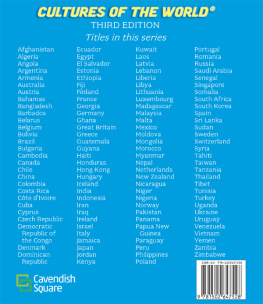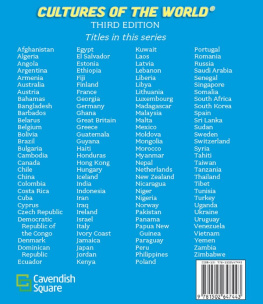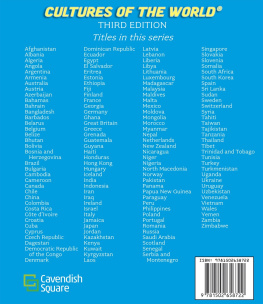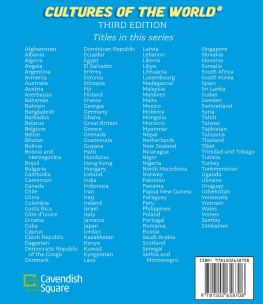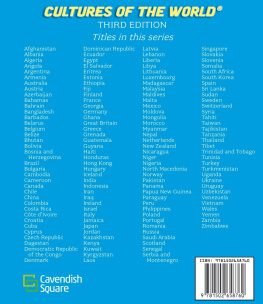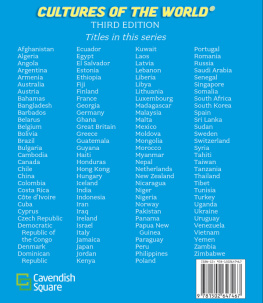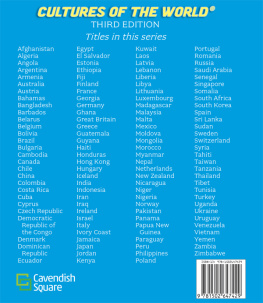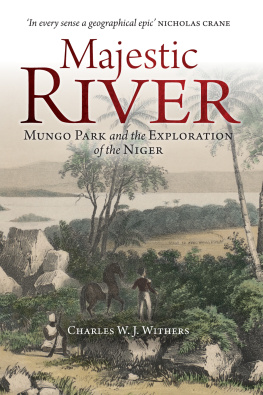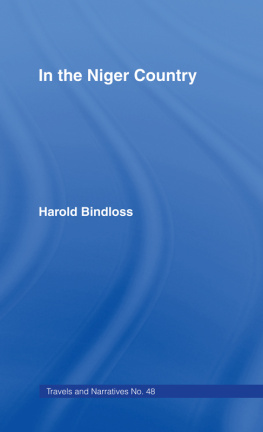
Published in 2020 by Cavendish Square Publishing, LLC
243 5th Avenue, Suite 136, New York, NY 10016
Copyright 2020 by Cavendish Square Publishing, LLC
Third Edition
No part of this publication may be reproduced, stored in a retrieval system, or transmitted in any form or by any meanselectronic, mechanical, photocopying, recording, or otherwisewithout the prior permission of the copyright owner. Request for permission should be addressed to Permissions, Cavendish Square Publishing, 243 5th Avenue, Suite 136, New York, NY 10016. Tel (877) 980-4450; fax (877) 980-4454. Website: cavendishsq.com
This publication represents the opinions and views of the author based on his or her personal experience, knowledge, and research. The information in this book serves as a general guide only. The author and publisher have used their best efforts in preparing this book and disclaim liability rising directly or indirectly from the use and application of this book.
All websites were available and accurate when this book was sent to press.
Library of Congress Cataloging-in-Publication Data
Names: Seffal, Rabah, author. | Spilling, Jo-Ann, author. | Nevins, Debbie, author.
Title: Niger / Rabah Seffal, Jo-Ann Spilling, and Debbie Nevins.
Description: Third edition. | New York, NY: Cavendish Square Publishing, LLC, 2019. | Series: Cultures of the world | Audience: 6 and up. |
Includes bibliographical references and index.
Identifiers: LCCN 2019013494 (print) | LCCN 2019014664 (ebook) | ISBN 9781502647535 (ebook) | ISBN 9781502647528 (library bound)
Subjects: LCSH: Niger--Juvenile literature.
Classification: LCC DT547.22 (ebook) | LCC DT547.22 .S44 2019 (print) | DDC 966.26--dc23
LC record available at https://lccn.loc.gov/2019013494
Writers, Rabah Seffal and Jo-Ann Spilling; Debbie Nevins, third edition
Editorial Director, third edition: David McNamara
Editor, third edition: Debbie Nevins
Art Director, third edition: Alan Sliwinski
Designer, third edition: Jessica Nevins
Production Manager, third edition: Karol Szymczuk
Cover Picture Researcher: Alan Sliwinski
Picture Researcher, third edition: Jessica Nevins
The photographs in this book are used with the permission of: Cover john images/Moment Open/Getty Images; p..
Printed in the United States of America


T HE REPUBLIC OF NIGER IS A HUGE COUNTRY ON A HUGE continent. Yet it occupies a miniscule place in the worlds perception. Outside of Africa itself, many people dont know where it is or even what it is. For one thing, Niger is not Nigeria. Google almost anything relating to Niger and the search engine will assume you meant Nigeria. The two countries are neighbors, and their similar names are both derived from the Niger River. But they are not the same country. For another thing, the pronunciation for Niger is not NYE-djur. The correct way to say it is nee-ZHAIR.
Niger is a landlocked country in western Africa. It shares borders with several neighbors Nigeria and Benin to the south, Burkina Faso and Mali to the west, Algeria and Libya to the north, and Chad to the east. For a place that garners little international attention, Niger is nevertheless a country of superlatives. Not only is it one of the largest countries in Africa, its also one of the hottest places on Earth. More than 80 percent of the country lies within the Sahara Desert. Temperatures can sometimes reach 113 degrees Fahrenheit (45 degrees Celsius).

Many villages in rural regions of Niger look much like this.
Niger also has the sad distinction of being one of the poorest countries in the world. Its economy is mainly based on agriculture, although it has gained from the export of uranium and, more recently, oil. In spite of its natural resources, Niger remains underdeveloped due to its landlocked position, recurring drought, poor infrastructure, and low levels of education among its people. Like many other African nations, the country can trace much of its low economic status and lack of development to a history of oppression and exploitation under European colonialism. In 1960, Niger gained independence from French colonial rule. The French influence is still evident in its official language.
Niger has a rapidly growing population of some twenty million people. Its society is diverse and consists of six major ethnic groupsthe Hausa, the Songhai and Zarma (Djerma), the Fulani (Peuhl), the Tuareg, and the Kanuri. The great majority of Nigeriens are Muslims. Most live in rural communities. Urban dwellers live in the southern citiesthe capital, Niamey; and Maradi, Agadez, and Zinder. The north is largely unpopulated desert.

Merchants sell their wares at a market in Niamey.
Nigers surging population numbers reflect its high fertility rate. In fact, it has the worlds highest fertility rate, with an average of seven children per woman (in 2016). This, in turn, is related to its high rate of child marriage again the highest in the world, at 76 percent. The (usually forced) marriage of girls below age eighteenoften to much older menis a common cultural norm. This tradition has the effect of ending girls education, promoting adolescent motherhood, and producing a great disparity in power between men and women.
In 2016, Save the Children released a report declaring Niger to be the worst place in the world for girls. (Save the Children is an international nongovernmental organization that promotes childrens rights and helps support children in developing countries.) In coming to this conclusion, researchers considered several indicators, including child marriage, adolescent motherhood, education, access to health care, and female representation in government. Of the 144 countries analyzed on the Girls Opportunity Index, the bottom twenty were all in sub-Saharan Africa. Niger was dead last.

Young girls in Niamey wear traditional Islamic clothing.
That assessment is only one of many indices that try to evaluate the state of the worlds nations. Various organizations conduct their own annual surveys and research to determine the dynamics of global human wealth, health, happiness, and well-being. In 2018, for example, the United Nations Development Programmes Human Development Index ranked Niger 189th out of 189 countries. (For comparison, Norway ranked 1st and the United States ranked 13th.)
As Niger struggles with poverty and its related problems, it also struggles with political instability. Although it has managed to hold elections and conduct peaceful regime change according to its constitution, Niger has also, over the years, suffered dictatorships and multiple coups detat (sudden, forceful, and illegal takeovers of the government, typically by the military).
Complicating these woes is Nigers position in the midst of even more politically troubled countries. From Mali to Nigeria to Libya, Niger is surrounded by nations with active, armed separatist insurgencies and civil wars. Jihadi (militant Islamist) terrorist groups occasionally spill across the borders into Niger to carry out bombings and kidnappings. Some of these are aimed against Western interests, particularly French mining operations. Desperate young Nigeriens, lacking food, jobs, and hope, are easily drawn to the revolutionary rhetoric of these jihadi missionaries. Moreover, droves of refugees fleeing violence in neighboring countries cross into Niger, which could not be less equipped to deal with additional needy populations.

